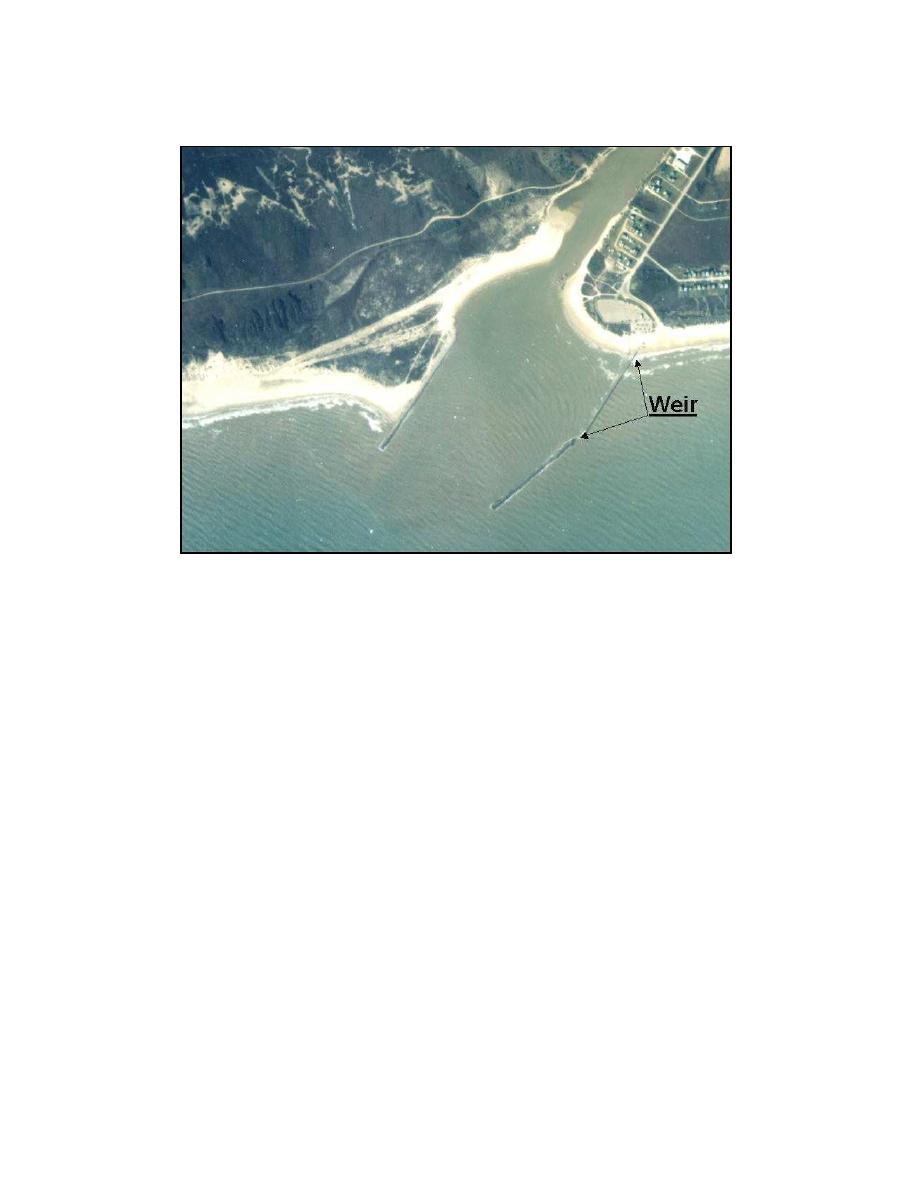
January 13, 2004
14:36
WSPC/101-CEJ
00094
547
Progress in Management of Sediment Bypassing at Coastal Inlets
Fig. 10. Mouth of Colorado River, Texas, January 2001.
Figure 10. Mouth of Colorado River, Texas, January 2001.
are about 549 m apart. The jetty design incorporated an impoundment basin on the
channel side of the north jetty to trap littoral drift material passing over the weir
(Sargent and Bottin, 1989). The basin was initially dredged to hold 2-year supply
of 459,000 cubic meters (Lin, Kraus, and Barcak, 2002).
After constructing the jetties and weir, the position of the channel became stable,
and vessels could exit heading into the typical waves as opposed to meeting them
broadside as would occur without the jetties. This weir jetty and impoundment basin
were constructed to accommodate the anticipated increased deposition and have not
functioned satisfactorily (Kraus, Lin, and Barcak, 2003), because the amount of sand
flowing over the weir has been greater than expected, and a significant portion was
deposited in the navigation channel rather than into the deposition basin (GAO,
2002). Once again the sediment pathway, as noted for other weir jetty projects,
once passing over the weir, is along the shore or swash zone towards the channel.
However, modifications to improve the functioning in the system are soon to be
incorporated. The first modification is to construct an impoundment basin training
structure to function as a groin in halting encroachment of the east spit to the
channel and to direct westward moving longshore sediment transport into the basin
(Kraus, Lin and Barcak, 2003). Raising of the weir to mean sea level is also under
consideration.
33



 Previous Page
Previous Page
